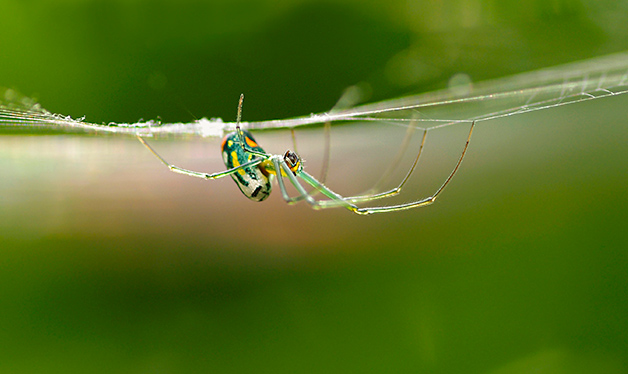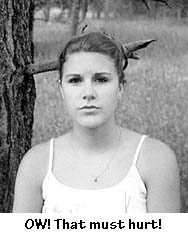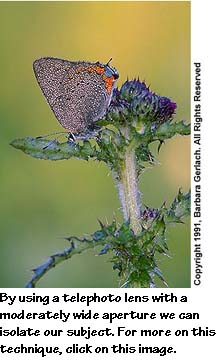Early last century, German and Austrian psychologists developed a school of thought known as Gestalt, a German word meaning “shape.” It was their aim to learn how the mind perceived and processed visual input.

© 2013 Marla Meier. All rights reserved.
The result was a theory of principles, supposedly free from subjective aesthetic bias, that artists have been able to use to present visual information – whether it be the printed page, painting or photography. This theory is called “Gestalt Theory” and although it may use unfamiliar names or titles, these principles may be familiar to most photographers. This is the third article in a series.

The photograph above is a painful example of what happens when we don’t pay enough attention to the background visible behind a subject. The reason we see the scene the way we do – that is, a young woman with a spike through her head – is that our brains are trying to make sense of a two-dimensional representation of three-dimensional reality.
If we had been physically present, we would have recognized immediately that the branch was well behind the model. But when we photograph the situation, this fact is lost. Because the branch and the model’s head are both in focus and are in two-dimensional contact with each other, our brains interpret the two as being one.
Things do not need to be actually touching for our brain to organize them into a unified group. Look at the following example:
So how do we use this in our photography? We need to pay careful attention to all of the elements of our photograph when we look through the view finder. First identify the positive and negative spaces within the image (Refer to Part 1). Remember the positive space is your subject, and the negative space is everything else. When focusing on your subject – are there objects within the photograph, when in focus, because of their proximity, that will become part of the positive space? If so, move either the foreign object or your subject so that the object can no longer interfere.
However, relocating the subject and/or foreign object is not always possible. In that case, try the trick fashion and wildlife photographers use to isolate their subjects. You can throw a foreign object (or distracting background) out of focus by using a telephoto lens with a wide aperture.
Remember, the longer the telephoto lens, the shorter the depth of field. When you’re using wider apertures, it may be possible to focus on your subject and leave everything else out of focus.
Visit Jim Altengarten’s article on Understanding Depth-of-field for Landscape Photos to understand the technique.

In this photo (left or above) the positive and negative spaces are very deliberately defined. By using the long lens, Barbara Gerlach was able to bring the butterfly and its roost into clear view against a very distracting background. In this example the butterfly and the thistle become a single element, while the surroundings become invisible. There is nothing that will distract us from the subject or try to become part of the subject (positive space.)
Can “proximity” be used creatively as something positive? Before the advent of digital special effects, “proximity” was used to develop a number of in-camera special effects. It was possible to have a giant hold the man, Gulliver, in his hand when the camera focused on both the giant’s hand (up close) and Gulliver in the distance (who was, therefore, smaller because of perspective.) Try the same illusion and experiment with special effects photos of your own.
Our next Gestalt article will be “Continuation.”
You’ll want to read all of the other articles in the series:
Part 1 – Gestalt Theory and Photographic Composition: Equilibrium
Part 2 – Gestalt Theory and Photographic Composition: Closure
Part 4 – Gestalt Theory and Photographic Composition: Continuation
Part 5 – Gestalt Theory and Photographic Composition: Figure/Ground
Part 6 – Gestalt Theory and Photographic Composition: Isomorphic Correspondence
by Michael Fulks

Leave a Reply